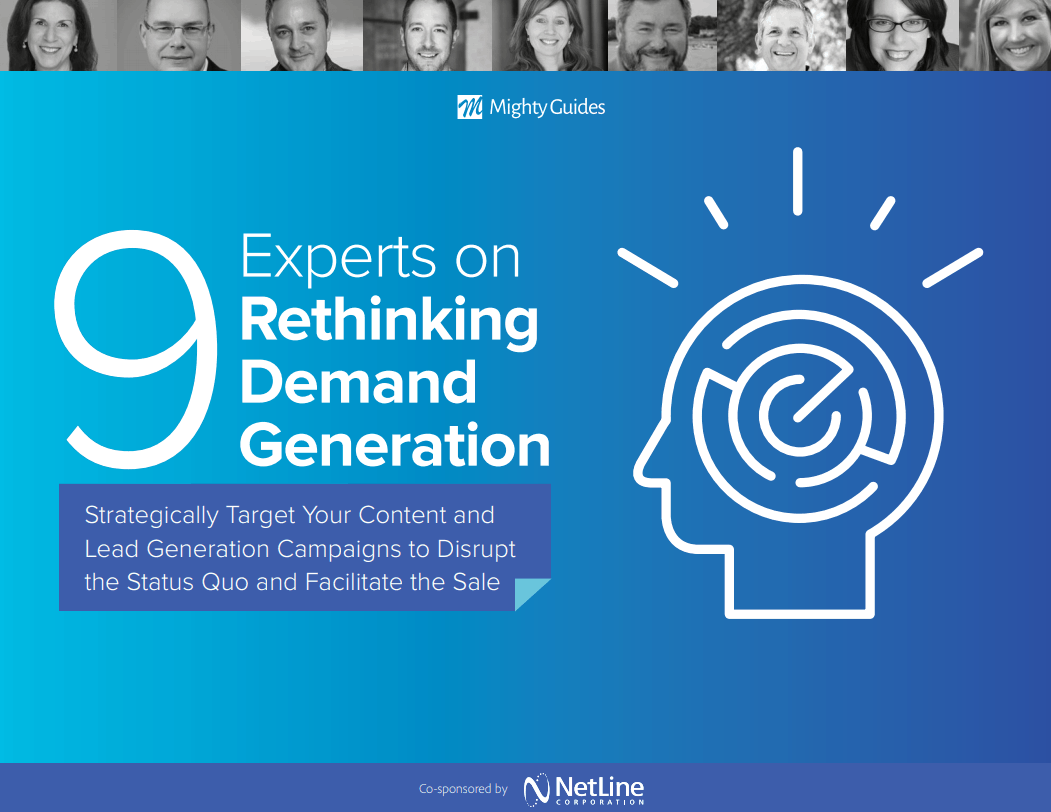
Babette Ten Haken, Founder and President, Sales Aerobics for Engineers
DEMAND GEN CONTENT MUST RECOGNIZE THE MANY VOICES IN A BUYING DECISION
- For demand generation content to reach and influence a team of decision makers, it must tell stories relevant to the interests and perspectives of people involved in the decision.
- Answer tough questions often and early. Avoiding those issues only serves to fuel objections and skepticism which can stall or derail a decision.
- Status quo decision making, which is to make no decision atall, often happens when content fails to address issues important to influencers.
“When you create demand generation content, ask yourself questions a skeptic would ask.”
Today’s business-to-business buying decisions are group activities, and a critical part of the decision process is storytelling. Just as people once gathered around the campfire to share stories about what they had seen and heard, today’s decision influencers sit around the table to share their views on matters related to a purchase. “People constantly gain insights from each other,” says Babette Ten Haken, a management strategist. “And every company has its own unique anthropology.”
Ten Haken finds that the various people in an organization often tell you the same things, but in different ways. If you speak to people long enough, eventually they will tell you their story. In any organization, a continuum of stories exists in the workforce, ready for you to discover.
What does this continuum have to do with demand generation? It goes to the heart of why a decision maker reads your content or listens to what you have to say. For decision makers to listen, they must see or hear stories that mean something to them, that “speak directly” to them and their own stories.
“People do business with people they trust. Decision makers cannot trust you if they do not understand what you’re saying,” Ten Haken explains. For demand generation content to reach and influence decision makers, it must tell stories relevant to the different interests and perspectives of the people involved in the decision.
Marketers can use three strategies to apply this multivoice approach when creating compelling demand generation content:
1. Break big, complex messages into smaller pieces. Ten Haken says, “I recommend building a demand generation strategy based on line-ofbusiness value, broken into bite-sized, actionable chunks.” This strategy not only makes messages and content more digestible but also makes it easier for influencers to find the specific messages most important to them. As a result, decision makers can more easily identify with your products and services. “When you provide many little pieces of information, decision makers unconsciously begin to accept pieces of your argument earlier in the buying cycle,” says Ten Haken.
2. Answer the tough questions first. Marketing and salespeople want to avoid impediments to closing a deal, so they marginalize objections and treat them as technical details to resolve after the sale. However, avoiding those issues only serves to fuel objections and skepticism. “When you create demand generation content, ask yourself questions a skeptic would ask,” says Ten Haken. “Decision makers want you to be brutally honest about your story, including the risks and implementation pains they can expect. If you make your pitch sound lovely and easy and everybody’s going to be happy, nobody’s going to believe that.” By addressing difficult questions early, decision makers and influencers become receptive to your broader value messages and walk away with arguments they can use to defuse skeptics in their own organization.
3. Make your demand generation content human. Ten Haken says, “Expert content creators try to avoid making certain selling points sound obvious. Instead, they leverage content that humanizes those points in ways that connect with end users, including people on the plant floor and loading dock all the way to people in the C-suite. This demand generation strategy allows decision makers and influencers to see themselves in the context of the story being told. That’s when they start to buy into the story.”
When leveraging a demand generation strategy, marketing and sales must overcome the inertia of status quo decision making, which is simply to make no decision at all. Perhaps your messaging fails to speak to influencers in a way that connects or that they understand personally. Perhaps it fails to address the issues most important to decision makers.
“Sometimes, those influencers’ concerns may seem minor from the perspective of what you want to sell, but in reality, those concerns matter most,” says Ten Haken. Only by speaking to all the influencer voices can a demand generation strategy identify the elements most important to buyers, enabling them to sit around the table and reach their own consensus.



